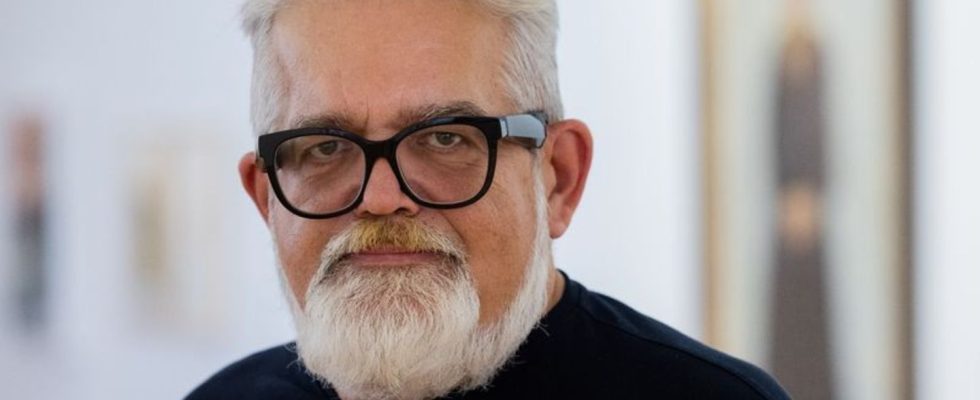Look in Cologne
The Russian avant-garde is also Ukrainian modernism
Curator Konstantin Akinsha in the Museum Ludwig in Cologne. photo
© Rolf Vennenbernd/dpa
Until the Russian war of aggression, many in Europe hardly noticed Ukraine, especially not culturally. Thanks to Putin – as a Ukrainian curator puts it cynically – this has now changed fundamentally.
What happens when a museum suddenly realizes that its Russian avant-garde collection is partly Ukrainian modernism? This is exactly what happened to the Museum Ludwig in Cologne. The matter will be dealt with in an exhibition entitled “Ukrainian Modernism 1900-1930 & Daria Koltsova” until September.
The exhibition is politically charged, as Russian President Vladimir Putin is known to deny that Ukraine has an independent culture and national identity. Against this background, the period from 1900 to 1930 is particularly interesting, since Ukraine was striving for autonomy during this time, was even independent at times, but then ultimately merged into the Soviet Union.
“Russian avant-garde” is a Western coinage
Artists from this period were summarized and marketed by Western art dealers under the term “Russian avant-garde”. The famous Constructivist Kasimir Malevich, for example, was born in Kiev and described himself as “Ukrainian” – later, however, he wanted nothing more to do with any nationality. He lived and worked mainly in Russia. National attributions are not easy and in some cases do not even make sense, but the “Russian avant-garde” encroachment is very problematic.
“It was actually of central importance for the artists of that time that they were internationally networked,” says the deputy museum director Rita Kersting of the German Press Agency. “Some felt they were Ukrainians and others decided not to state their nationality. But ‘Russian avant-garde’ is definitely a wrong term. Gallerists in the West invented it – we knew that beforehand. But even we here in the museum have it I didn’t know how many artists were born in Kiev or Kharkiv, had their studios there, enriched these cities so much.”
It has been said many times that, sadly, it took a war for Ukraine to really get noticed in Europe. This applies in particular to art and culture. The mastermind behind the exhibition, the Ukrainian curator Konstantin Akinsha, reports that for years he encountered great reluctance in Germany and other countries when it came to Ukrainian art.
Kharkiv as a vibrant cultural center
The museum officials feared supporting Ukrainian nationalism and alienating their Russian partners in Moscow and Saint Petersburg. That only changed after the war. In this respect, according to Akinsha with a certain cynicism, Kremlin President Putin should be regarded as the main sponsor of the exhibition.
Kharkiv, for example, Ukraine’s second largest city in the north-east of the country, has been in the news since the beginning of the Russian attack – before that almost nobody knew it. The exhibition shows the city from a different perspective: as a vibrant cultural center.
The exhibition has previously been shown in a similar form at the Museo Nacional Thyssen-Bornemisza in Madrid. The pictures for this were transported from the Ukraine to the West under bizarre circumstances. So now they are in Cologne, enriched with pictures from the holdings of the museum, which is internationally known for its large collection of “Russian avant-garde”.
Glass installation by Daria Koltsova
After that, the exhibition will travel on: to Brussels, to Vienna, to London. And then? Then the war will hopefully be over and the pictures can go back. but who knows that? They’re safer here now.
The exhibition in Cologne will be expanded to include a current commissioned work by artist Daria Koltsova, who was born in Kharkiv in 1987. She presents an impressively beautiful monumental glass installation related to the famous Derzhprom building in her hometown. Built in the 1920s, this constructivist “House of State Industry” was the largest reinforced concrete building in Europe at the time.
The Ukrainian curator Yuliia Berdiiarova compares the importance of the building for the residents of Kharkiv with that of the cathedral for the people of Cologne. Whenever the city was bombed by the Russians, the residents of Kharkiv not only checked whether their own house was still standing, but also whether the Derzhprom was still intact.
Information about the exhibition

